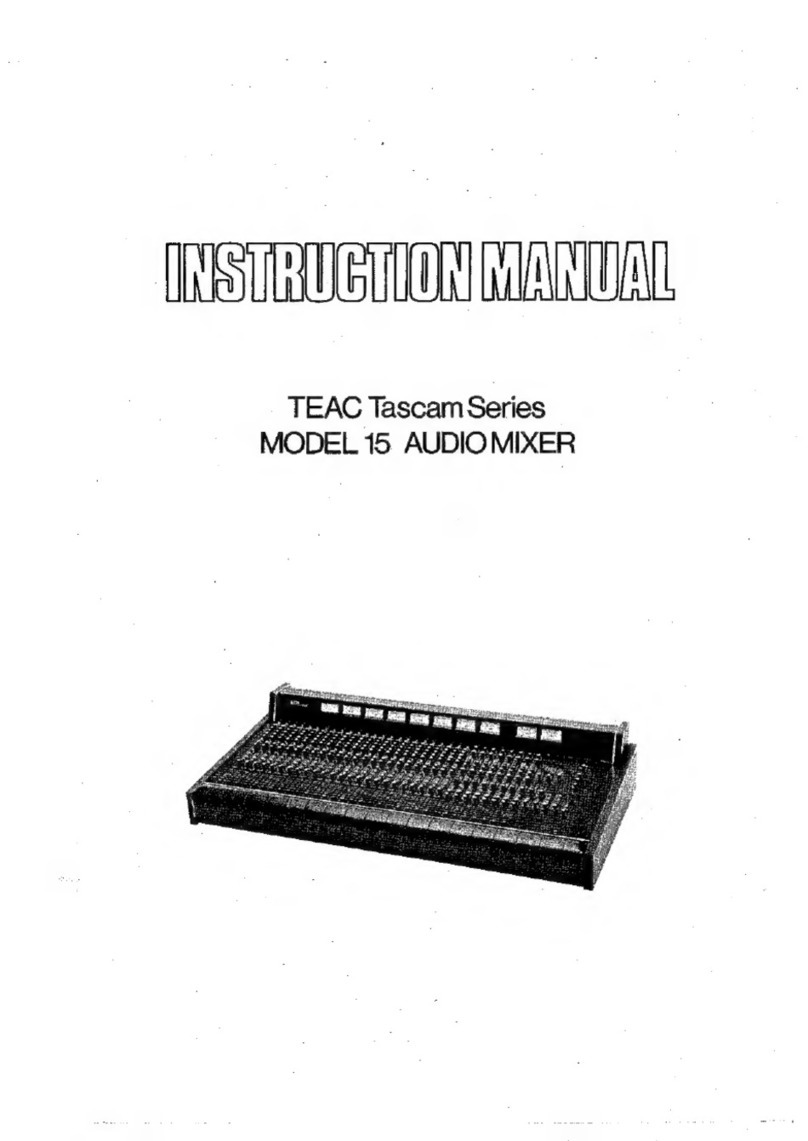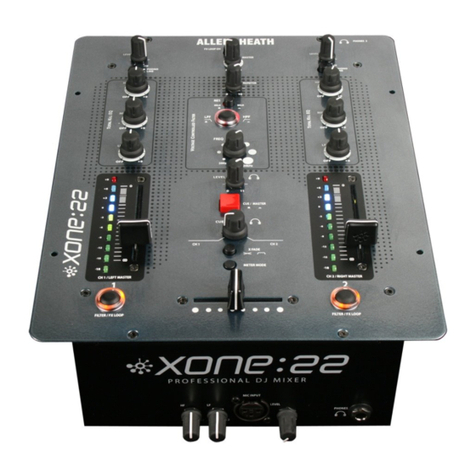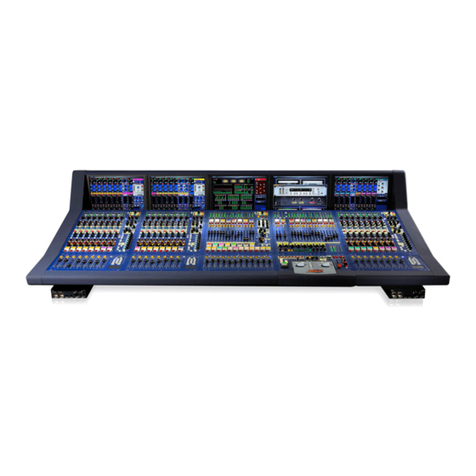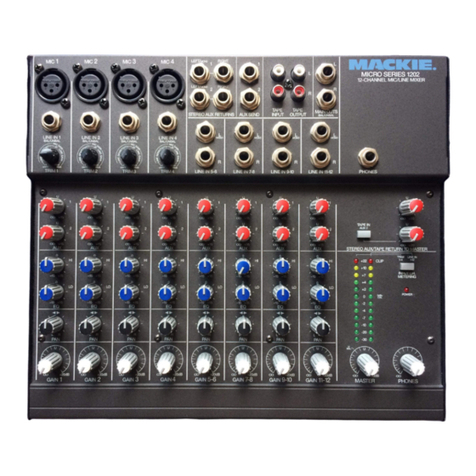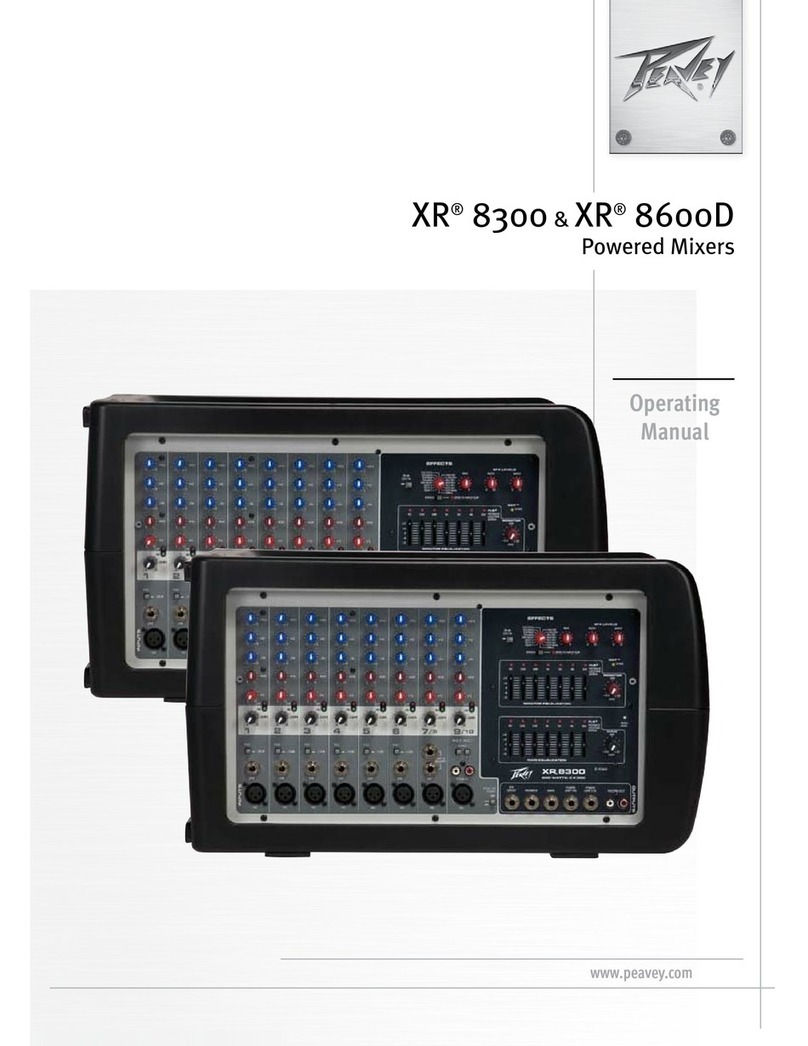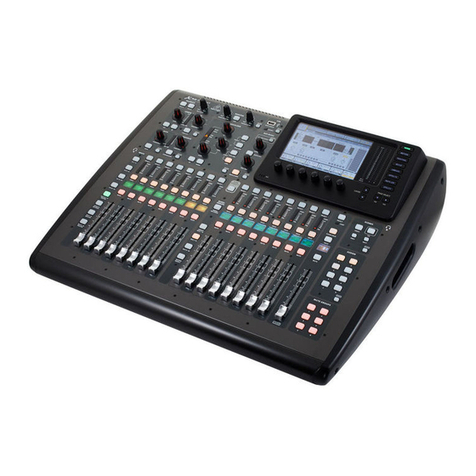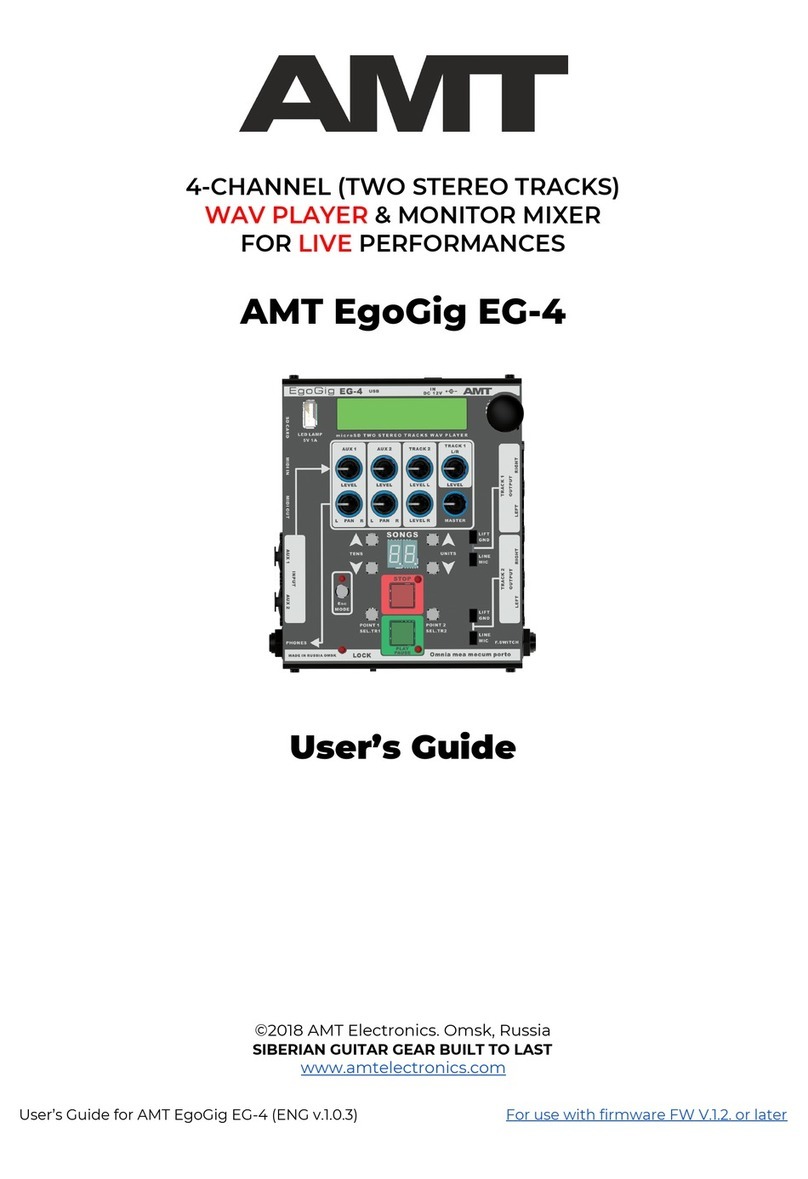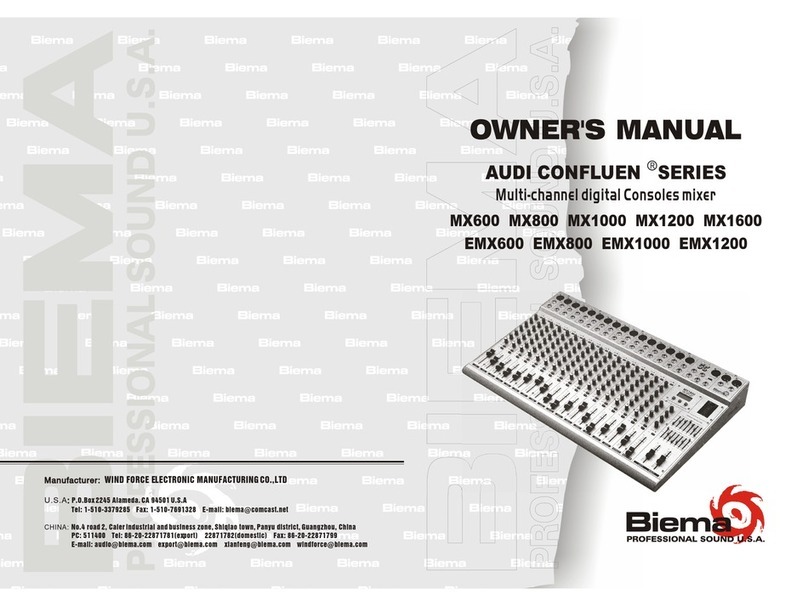Equipe Cosmos Product manual

Cosmos
INSTALLATION & MAINTENANCE GUIDE
Installation &
Maintenance
Guide
Cosmos
English

Cosmos
INSTALLATION & MAINTENANCE GUIDE
IMPORTANT
These instructions are a general guide for installing
Equipe products.
Some jobs may require different or more detailed
specications.
Hardly ever problems in a ceramic surface are due to
the ceramic product, they are usually due to a poor
laying process, so please read and understand these
instructions before beginning to install our products.
No claims will be accepted if the products are not installed
following these instructions.
If there is any problem related to defective tiles, you
should detect it before installation, so it is completely
necessary to check all tiles before installation.
Open and check every box of tiles before laying them,
because we will absolutely not accept claims regarding
installation costs.
I) Receiving the tiles
If there is any problem related to defective tiles, you should detect
it BEFORE INSTALLATION, so it is completely necessary to
check all tiles before installation.
Open and check every box of tiles before laying them, because
we will absolutely not accept claims regarding
installation costs.
If you are installing eld tiles and special pieces or decos,
make sure that the tone of all products is compatible,
taking in mind that there might be slight shade differences
that will not affect the nal result.
II) Installation
Do not use these tiles for floors!!
Use only for indoors!!
If you have any doubt, stop laying the tiles and contact us.
Problems are always much easier to solve if tiles are not
installed!!
1) Surface of installation
It is the surface that you will apply the bonding material
on.
The surface must be completely clean before starting
the laying of the tiles. Any residue that is not eliminated
will create weak bonding points that may generate
future problems.
It is also necessary that the surface is perfectly dry (less
than 3%), vertical and plane (less than 3 mm deviation
and 2 m length, along any direction).
The surface also has to have a good cohesion.
Finally, it is essential that the surface is stable,
because surface shrinking, expansion or warping would
be disastrous for the tiles.
The water-sensitive substrates (wood and chipboard,
plaster and precast gypsum, etc.) may require a
waterproong primer.
If you are installing intermediate layers (insulation or
waterproong), check instructions for these products
before start tiling.
2) Selecting bonding materials
Check the following table to choose the better bonding
material, according to the kind of surface you are tiling.
Anyway, it is always a good idea to ask to the
manufacturer or distributor of the bonding material for
the most suitable material to be used.
Ceramic
brick or
concrete
blocks1
C1
- Better with extended open time (E)
- Better with reduced vertical displacement (T)
- You may need to use deformable adhesives (S1 or S2)
C2
- In case of harsh weather (rain, low or high temperatures,
wind) use adhesive with extended open time (E), and do not
use type F (fast cement)
- Better with reduced vertical displacement (T)
- You may need to use deformable adhesives (S1 or S2)
R - Use when chemical resistance is needed
Cement2
C1
- Better with extended open time (E)
- Better with reduced vertical displacement (T)
- You may need to use deformable adhesives (S1 or S2)3
C2
- In case of harsh weather (rain, low or high temperatures,
wind) use adhesive with extended open time (E), and do not
use type F (fast cement)
- Better with reduced vertical displacement (T)
- You may need to use deformable adhesives (S1 or S2)3
R - Use when chemical resistance is needed
Flat concrete
surfaces
C2
- In case of harsh weather (rain, low or high temperatures,
wind) use adhesive with extended open time (E), and do not
use type F (fast cement)
- Better with reduced vertical displacement (T)
- You may need to use deformable adhesives (S1 or S2)
R - Use when chemical resistance is needed
Plaster and
precast
gypsum4
C2
(S1 ó S2)
- In case of harsh weather (rain, low or high temperatures,
wind) use adhesive with extended open time (E), and do not
use type F (fast cement)
- Better with reduced vertical displacement (T)
D1 - Use D2 for wet rooms
R
deformable - Use when chemical resistance is needed
Ceramic
tiles,
terrazzo
or natural
stone5
C2
- In case of harsh weather (rain, low or high temperatures,
wind) use adhesive with extended open time (E), and do not
use type F (fast cement)
- Better with reduced vertical displacement (T)
R - Use when chemical resistance is needed
Wood4R
deformable
Metal R
deformable
Surface to be
tiled
Type of
adhesive Comments

Cosmos
INSTALLATION & MAINTENANCE GUIDE
3) Tiling
3.1.- Before you start
Do not hurry, do things slowly and safely, and arrange all
materials and tools before starting the job.
If this is the rst time you lay ceramic tiles, or you have
limited experience, we recommend that you start tiling
in a “hidden spot” (a part of the wall that will be covered
by furniture, for example), as test area.
Basically, the tools you need are: meter, rule, level,
carpenter’s square, pails to prepare materials, notched
trowel, rigid rubber plate, rubber hammer, rubber trowel,
rigid sponges, cutter (manual or electric). And for your
safety, at least: gloves, security glasses and steel toe
boots.
All products and tools must be used according to the
manufacturer’s instructions.
During installation, the better weather conditions are:
• Temperature between 5 and 30 ºC.
• Avoid rain or high humidity.
• Avoid risk of frost.
• Avoid strong wind.
• Do not wet the surface until 48 hours after tiling.
• The temperature of the water used to prepare
bonding materials is important, check the
manufacturer’s recommendations.
Do not use the thick-layer installation method, always install
tiles following the thin-layer technique (3-5 mm thickness
of bonding material layer).
Besides, for bevelled tiles, it is highly recommendable to
use the double-bonding method (apply adhesive also to
the back side of the pieces), so the back of the tiles is
completely covered by the bonding material.
The laying joints must be at least 1.5 mm wide.
Do not submerge the tiles in water before installation.
3.2. General planning and stakeout
First of all, check that the laying surface is dry, stable,
vertical, plane and has good cohesion.
Do not start tiling if any of these characteristics is not
correct, because the result may be a complete disaster,
and very difcult to correct.
Do a thorough cleaning of the installation surface. This
is essential. Eliminate all remaining plaster, grease, wax,
globs of mortar, organic substances and dust.
Any particle that you do not clean may reduce the
adherence of the adhesive and let tiles fall off in the
future.
Usually real measurements are quite different from
dimensions shown in plans (sometimes even some cm),
so once the surface is completely clean check again all
measurements, including gaps (windows, doors, etc.),
and set the movement intermediate joints, if necessary.
These joints are essential in big surfaces, for walls
being more than 8 m long (or 10 m2).
We also recommend the setting of perimeter joints in
surfaces greater than 10 m2, specially for unstable
surfaces (plasterboards, wood, etc.).
The next step is to calculate the pattern of the laying joints,
to avoid an asymmetric pattern of joins (respect to the
perimeter of the surface), avoid narrow strips of tiles,
and to try to cut as less pieces as possible.
If this job is well done, you will save a lot of work and the
nal result will be much better.
It is very useful to draw a sketch (even freehand), scale
1:50, so you can see exactly how the surface will look
like before you lay the tiles.
A common way of laying tiles consists of starting setting
whole tiles next to the corner or edge that will be more
visible. Check if this is the best option for you, because
Sometimes this creates a very ugly nal result, full of
narrow strips of cut tiles.
Finally, organize all tools, materials and tiles in the
room, to be able to work comfortably. It is a good idea to
distribute groups of boxes of tiles throughout the room,
so you will not have to be constantly going for tiles as
installation goes on.
3.3. Adhesive preparation
Prepare the xing material, always following the
manufacturer’s instructions, using an electric low speed
mixer, until you get an homogeneous and lump-free paste,
without bubbles.
The adhesive manufacturer will inform you about the
quantity you will need per square meter.
1It should be at least 2 months old.
2It should be at least 1 month old.
3Specially if the laying surface is less than 1 month old.
4 It may require a waterproong primer.
5 Make sure that existing tiles are well attached to the surface and completely clean.
It may require a primer to enhance adherence

Cosmos
INSTALLATION & MAINTENANCE GUIDE
Do not mix all the adhesive you will need at once, take
in mind that, once mixed, adhesives have a limited
lifespan. Prepare only the quantity you can use during
that lifespan.
a) Cement adhesives (type C)
• Always drop powder adhesive on water (previously
prepared in the mixing pail), and not water on
powder.
• If you notice hard lumps in the powder, do not use
that sack of adhesive. It means that it was hydrated
and might have lost its adhesive properties.
• For this same reason, do not keep adhesives for a
long time once opened.
• Once the mix is done, do not add more water, in any
case and under any circumstances.
• After mixing, wait for the repose time of the adhesive
(set by manufacturer) before using it. After this time
has passed, slightly stir the adhesive again.
b) Reactive resins (type R)
• They usually consist of two separated ingredients.
Mix them pouring the minor component (hardener)
on the major component (resin, previously prepared
in the mixing pail).
• They usually do not require repose time
3.4. Laying the tiles
Apply the adhesive on the laying surface, using the
straight side of the notched trowel, in a small area, for
no more than 4 or 5 tiles, according to the open time of
the adhesive (maximum time during which the adhesive
can be used, from the moment it is applied).
Next, “comb” this adhesive, using the notched side of the
trowel. The manufacturer of the adhesive must inform
you about the most suitable kind of notched trowel to
use. Usually a U6 (V6 for type D adhesives) is correct.
Comb the adhesive always creating straight lines,
perpendicular to one side of the tiles.
This combing is important to get a uniform thickness
of the adhesive layer, and to get a maximum contact of the
back of the tiles with the adhesive.
If the back of the tiles is not completely covered by
adhesive, you will regret it in the future (tiles that fall off,
grouting material that falls off, tiles that broken when hit
or drilled, etc.).
Now it is time to lay the tile. Make sure that you do it
before the open time of the adhesive nishes (if not,
the back of the tiles may not be completely covered by
adhesive).
Do not trust the open time given by the manufacturer,
because it might change depending on the real
atmosphere conditions you are working on. Check it
from time to time, pulling up the last tile you just laid to
see if its back is really 100% covered by the adhesive.
Check every tile before laying it, to make sure it does not
have any defect.
The best way to lay tiles is the so-called Tarver Method:
• Apply adhesive also in the back of the tile, in the
case of double-bonding, with the straight side of
the notched trowel.
• Lay the tile more or less in its position, leaving
at least a 1.5 mm wide joint. You can use crosstree
pieces.
• Slide the tile, perpendicular to the grooves of the
adhesive, away from the closest tile, about the
distance of one adhesive groove.
• Slide the tile again to its original position, now laying
it exactly in its nal location, leaving the necessary
laying joints.
Using this method you will let the air in the adhesive
grooves to get away, eliminating bubbles.
Once the tile is in its position, check that it is in the same
plane than the others, with no low or high corners. If
necessary, use a clean rigid rubber plate, and hit it with
a rubber hammer.
Do any needed correction of the position of the tiles
during the adjust time of the adhesive.
Do never force a tile if it is hard to move, the only thing
you will get is a poor adhesion of the tile, so it will easily
fall off in the future.
Clean the excess of adhesive that accumulates in the
spaces of the joints before it hardens, and also the
adhesive in the glazed side of the tiles.
It is also important to remove the crosstree pieces
before the bonding material hardens.
4) Selecting grouting materials (laying
joints)
The kind of grouting material to use depends on the
nal use of the ceramic surface, and on the width of
the joints. It is a good idea to ask the grouting material
manufacturer about the more suitable product.
The most commonly used grouting materials are type GC2,
but it depends on the type of adhesive you used to lay
the tiles:
• If you used C1 adhesive, use CG1 grouting material.
• If you used C2 adhesive, use CG2 grouting material.

Cosmos
INSTALLATION & MAINTENANCE GUIDE
• If you used cement deformable adhesive (C1 or
C2), or type D adhesive, use deformable grouting
materials (CG S1 or S2).
• For R adhesives, use RG grouting material.
Use waterproof, anti-mildew grouting materials,
specially for wet areas (showers, baths, etc.). Joints will
be much easier to clean and maintain.
White grouting materials are usually used, but you can
also use coloured grouts, matching the colour of the tiles
or opposite to it. We recommend to spend some time
trying different options, you will see how it substantially
changes the nal look of the ceramic surface.
In any case, do not ever use materials coloured with
black smoke (micronized coal), they are very difcult to
clean.
5) Grouting (laying joints)
5.1. Before you start
The grouting operation deserves as much care and skill
as the laying of the tiles. The durability and aesthetic
quality of the ceramic surface largely depends on this
operation.
So, again, do not hurry, do things slowly and safely, and
arrange all materials and tools before starting the job.
If this is the rst time you lay ceramic tiles, or you have
limited experience, as we did for laying the tiles, we
recommend that you start grouting in a “hidden spot”
of the surface.
Use all products and tools according to the
manufacturer’s instructions.
Check that joints are empty and clean of bonding material,
that they are dry (specially for RG materials), and that
they have a uniform depth, equal to the thickness of the
tiles.
Wait for the time indicated by the manufacturer of the
adhesive you used before starting grouting.
In order to get a uniform colour of all grouts once the
job is done, try to use all the grouting material from the
same production lot (it must all have the same die lot
code and date of production).
5.2. Grouting material preparation
For CG materials, use exactly the amount of water
indicated by the manufacturer, and, as you did when
preparing the adhesive, pour powder on water (not
water on powder).
For RG materials pour liquid (minor ingredient) on paste
(major ingredient).
Mix using an electric low speed mixer, until you get a
homogeneous colour and texture.
As you did when preparing adhesive, do not prepare all
the quantity of grouting material you will need at once
(these materials also have a lifespan).
For CG materials, wait as indicated by the manufacturer
once the mix is done before using it.
5.3. Grouting
Most manufacturers will show you on their web page
how to apply grouting materials. We will describe the
most common method.
Using a hard rubber trowel, distribute the material along
the surface, always diagonally with respect to the joints.
This way you will ll the joints with the grouting material
uniformly, avoiding the edge of the trowel to get in the
joints, and cleaning the tiles at the same time.
Sometimes RG materials are quite hard, so you might
need steel spatulas or even an extruder.
Use the appropriate tool to curve the surface of the
joints. For narrow joints this is not necessary, you will
get it when cleaning the joints before they harden.
5.4. Cleaning and nishing
a) CG materials
Once all joints are lled, clean them with water. Wait for
the time indicated by the manufacturer before cleaning the
joints.
Use a wet but well drained rigid sponge (it is better if it
is attached to a trowel), rubbing the surface in circles.
Clean the sponge with water and drain it as many times
as necessary, and change the cleaning water when it
starts to be turbid.
It is very important that the sponge is always well
drained, to avoid different shades of the grout and future
eforescences.
You may need to do a second cleaning of the joints.
If the rst cleaning was done efciently, this second
cleaning can be done using just a dry cloth or suede.
Do not use espartos for cleaning.
b) RG materials
Cleaning is quite more difcult for these materials, so
make sure that you understand the instructions given
by the manufacturer before starting.
Usually, these materials must be emulsied using water

Cosmos
and special sponges, rubbing circles on the surface.
Clean sponges very often.
6) Cutting and drilling
There is a wide range of tools to make all cuts and
drilling you will need to install the tiles.
In general, it is advisable to lay the cut pieces in the
position where the cut is less visible.
The manual cutter is useful for most cuts, but does not
guarantee high accuracy.
Drilling for water intakes or drains should be done with
electric drills, without striker, equipped with diamond-
tipped drill bits, properly cooled by water.
For square holes manual cutter can also be used
(installing a special tungsten carbide punch), but is
always easier to use an electric cutter.
For special pieces (mouldings, torellos, etc.) use always an
electric cutter.
III) Cleaning and maintenance
1) Cleaning after nishing laying works
When laying and grouting are nished, the ceramic
surface may have a cement lm on it.
In most cases, using a diluted acid solution (vinegar, for
example) is enough to remove cement.
There are also specic commercial products for
cleaning cement, but they should be used with caution
as they usually have higher acid concentrations.
As a general rule, take always into account the following
cautions:
• Never use an acid product on recently installed tiles.
• Carefully read and observe the instructions and
recommendations given by the manufacturers of
cleaning products.
• Before using a cleaning agent, test its effect on the
ceramic tiles and grouts.
• Protect the surfaces where there are no ceramic tiles,
they may be affected by the cleaning product.
• Never use scrubbers or espartos to clean shiny tiles or
grouts.
• It is important to always use clean water. Change
cleaning water every 15 m2 approximately.
To remove the protective wax in the glazed surface of
tiles, use only warm water and a damp cloth. Do not use
scrubbers, blades or sharp objects that could scratch
the surface.
If you used a porous grouting material, non waterproof,
you may want to protect it with a grout sealer, specially if
grouts are white of have a light colour.
2) Daily maintenance
It is very easy to maintain our tiles. Just clean them
usually with warm water or a dilute solution of a common
detergent.
Never use scrubbers or espartos to clean tiles or grouts.
It is important to always use clean water. Change the
cleaning water every 25 m2 approximately.
If green or dark stains appear, it is usually due to humidity
and fungus. Clean the tiles or grouts with bleach, and try
to eliminate the source of humidity.
3) Extraordinary cleaning of stains and
encrustations
In most cases, the use of household products is enough
to eliminate the most common types of stains.
However, sometimes some products that have strong
colourings may spill or come into contact by chance with
the ceramic surface, producing spots or encrustations
that can not be removed by normal cleaning operations.
In those cases special cleaning agents and procedures
must be used. The choice must be made with caution,
taking into account the nature of the stain.
Before using a special cleaning agent, test its effect
on the ceramic tiles and grouts, specially in the case of
strong cleaning products (high concentrations) or solid
detergents with abrasive particles.
Carefully read and observe the instructions and
recommendations given by the manufacturers of cleaning
products.
It is important to always use clean water. We recommend
changing the cleaning water every 15 m2 approximately.
Protect the surfaces where there are no ceramic tiles,
because the cleaning agents may damage certain
materials such as wood, metals, etc.
INSTALLATION & MAINTENANCE GUIDE
Table of contents
Popular Music Mixer manuals by other brands
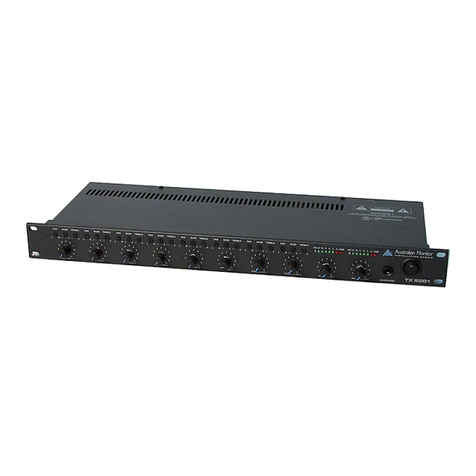
AUSTRALIAN MONITOR
AUSTRALIAN MONITOR TX8201 operating manual
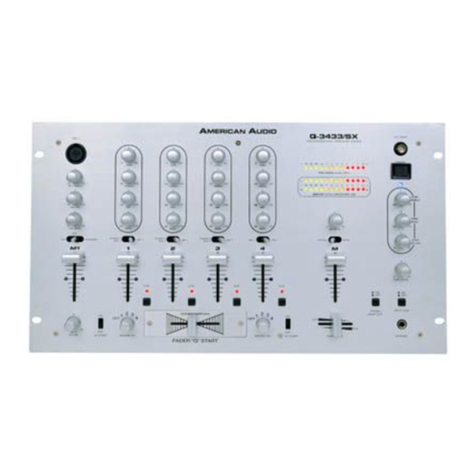
American DJ Audio
American DJ Audio Q-3433 MKII User instructions
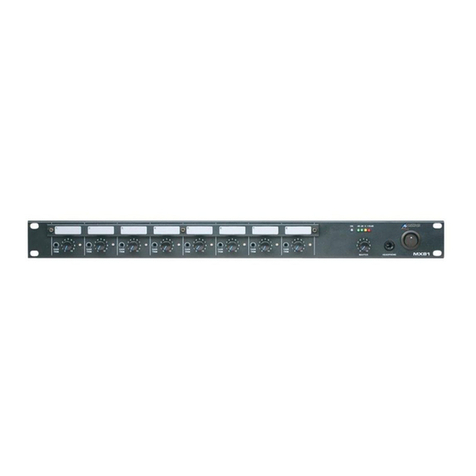
AUSTRALIAN MONITOR
AUSTRALIAN MONITOR MX81 Specifications
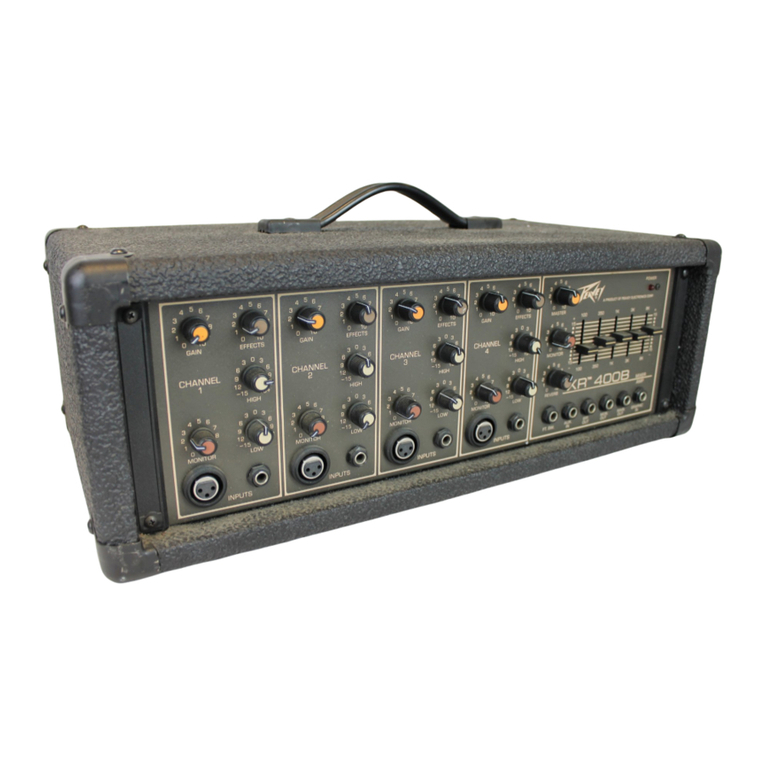
Peavey
Peavey XR 400B operating guide
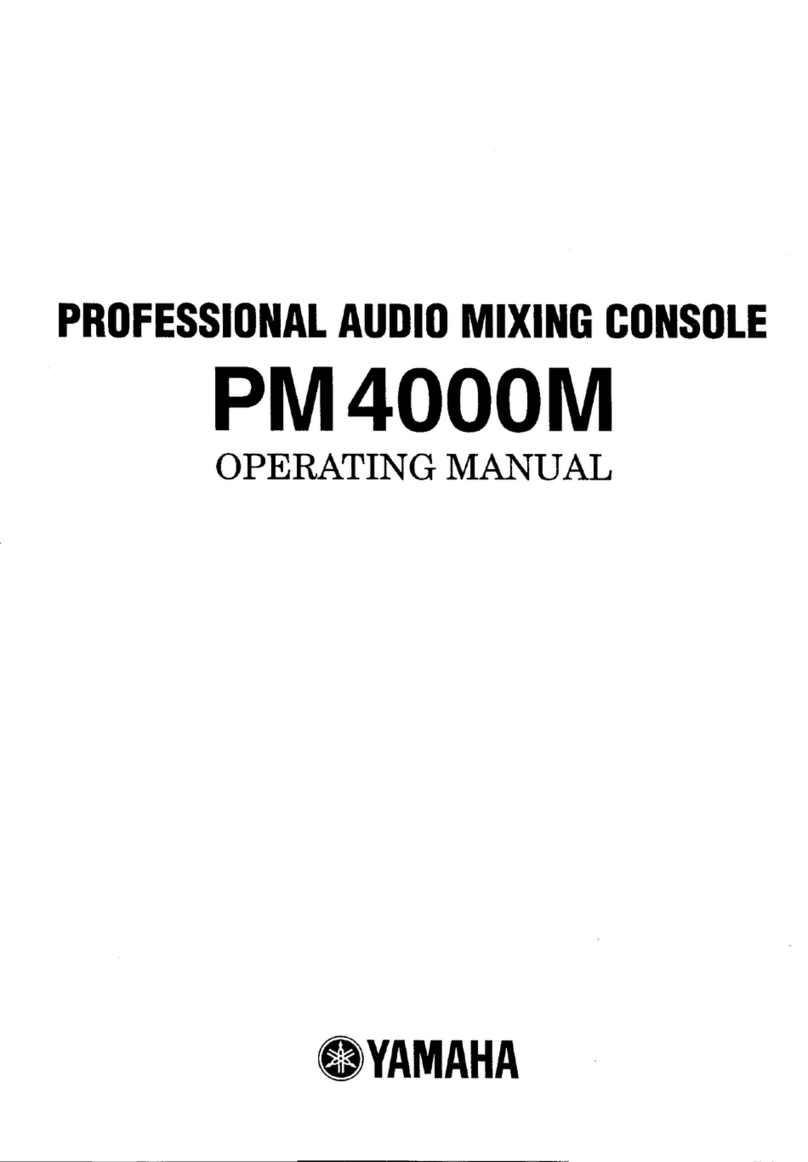
Yamaha
Yamaha PM4000M operating manual
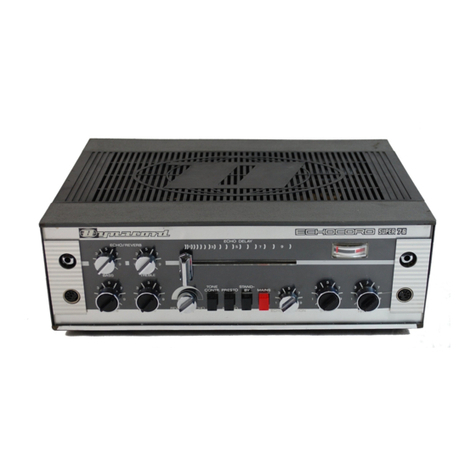
Dynacord
Dynacord Echocord Super 76 operating instructions


